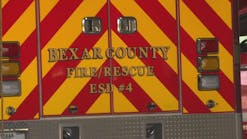As the times have changed, so has the fire service. The role and mission of the fire service has expanded and continues to do so. Numerous types of new service delivery require specialized apparatus and mandated local, state and federal training. In addition to basic and advanced fire training, many departments have had to send their personnel for instruction in such services as emergency medical care, collapse rescue, foam firefighting, confined-space rescue, urban search and rescue, high-angle rope rescue, scuba operations, fireboat operations, aircraft firefighting and rescue, and biological and chemical terrorism response. The fire service always responded to most of these types of incidents but more emphasis is put on specific areas of expertise.
For many fire departments, training may be boring and unimaginative. Many firefighters become complacent. As fires decrease in many areas of the country and other emergencies and EMS-related calls rise, experience and hands-on firefighting takes a backseat to these other necessary emergencies and responses. Just since our last issue, several firefighters have been killed in the line of duty across the nation and for a variety of reasons.
In the last several years, rapid intervention teams (RIT) or firefighter assist and search teams (FAST) have slowly been adopted by many fire departments. A lot of firefighters have been saying for awhile that we are not killing firefighters in building collapses, hazmat situations or confined- space rescues but the potential for trouble exists at each of these types of incidents. Firefighters without proper training can find themselves in trouble quickly.
At these types of calls, usually there are properly equipped firefighters utilizing new, technologically advanced and specialized equipment. Inside a building, no matter the size, making one wrong turn or losing your partner, the hoseline or the search rope can happen very quickly and it's very scary. We all must put more emphasis on requiring a RIT or FAST response at every fire. The time to call for the team is not when things start to go wrong. A three-, five- or 10-minute response time is no good when help is needed in seconds.
No firefighter wants to be assigned to wait in front of a burning building and stand fast in case something goes wrong. But that's just part of the drill. Wouldn't you want somebody standing by outside to come to your aid if you got into trouble? You're darn right you would. If help isn't available from your initial response, then maybe automatic aid or mutual aid is necessary. The time to act is now, not when a "Mayday" comes over your radio. Prepare for the worst-case scenario and hope that the extra help is not needed.
Let's take care of each other.





